Anthropology
Related: About this forumThe Choquequilla Inca Huaca
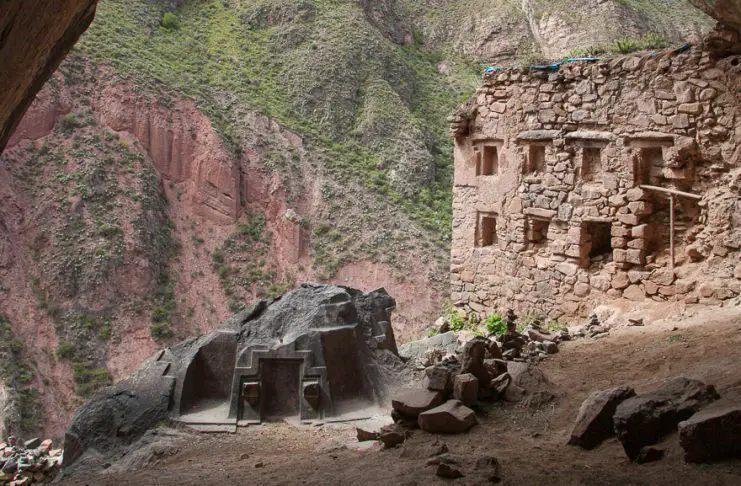
Image Credit: Greg Willis - CC BY-SA 4.0
Choquequilla, also called Ñaupa Iglesia, is an Inca huaca shrine, constructed within a cave opening near the present-day village of Pachar in the Sacred Valley of Peru.
In Inca society, a huaca or wak’a, was a sacred monument built along a processional ceremonial line or route. Inca emperors felt it their right to improve upon nature by sculpting in situ outcrops that often became huacas.
The Inca also believed that natural caves connected them with the underworld and their ancestors, serving as conduits to reach the gods, or were associated with Inca origin myths and ritual emergence.
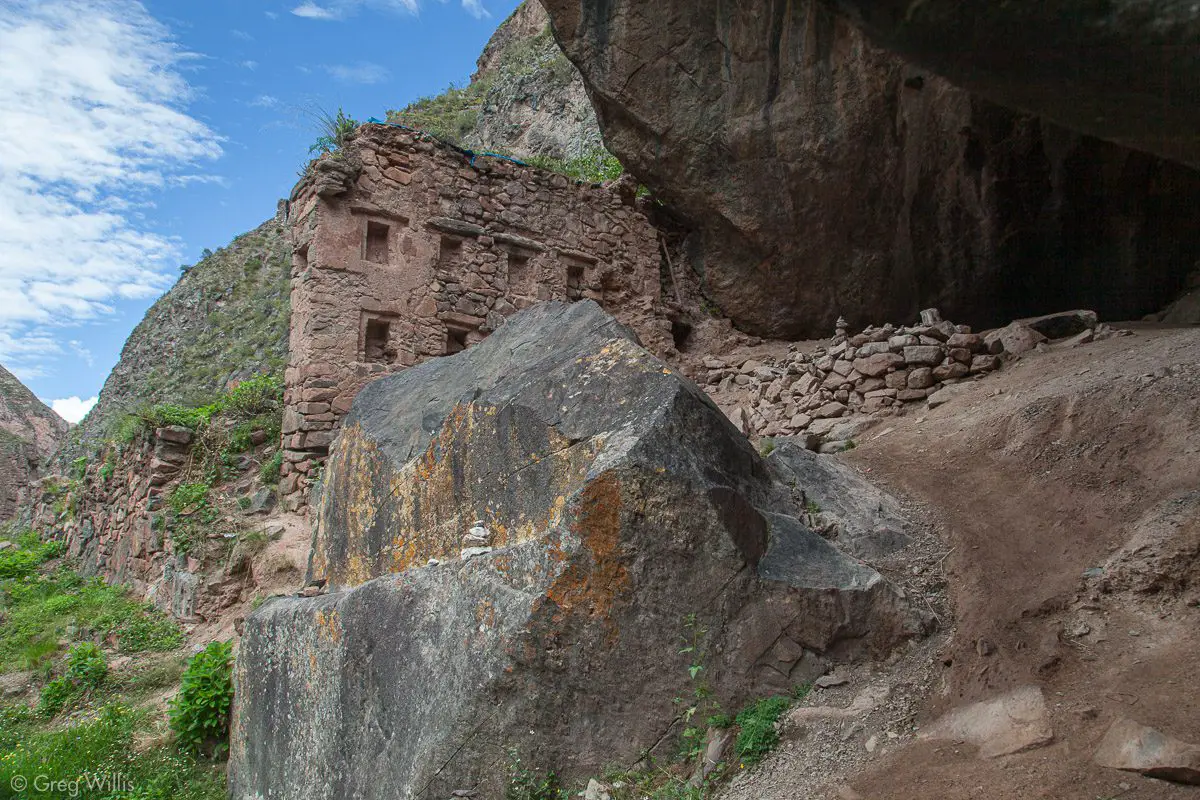
cave niche wall carved boulder at naupa iglesia
Image Credit: Greg Willis – CC BY-SA 4.0
The Choquequilla huaca was constructed where two relatively flat stone faces form an inverted ‘V’ in the cave roof, that during the December solstice sunrise illuminates the cave interior.
An intricately carved shrine made from black granite faces inward toward the cave, that closely resembles the Baño de la Ñusta (meaning “Bath of the Princess”) at nearby Ollantaytambo (although the Choquequilla altar has been badly damaged by looters).
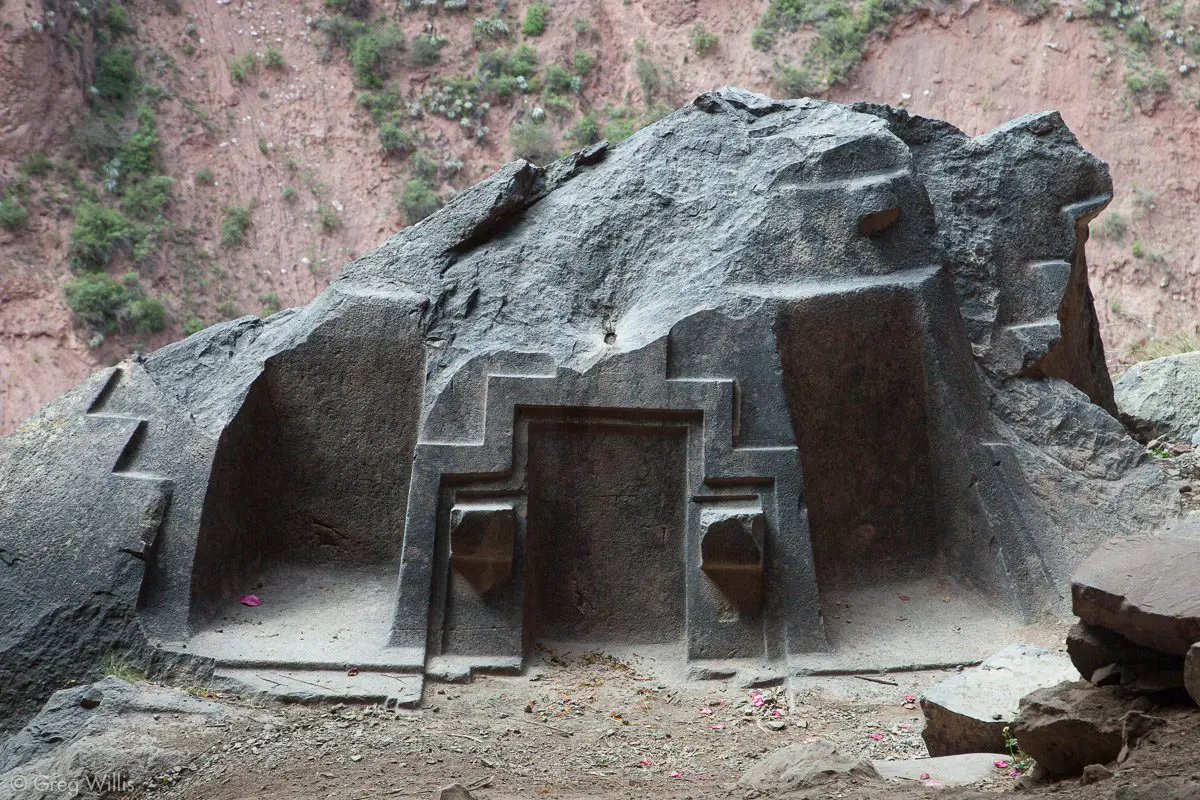
Image Credit: Greg Willis – CC BY-SA 4.0
More:
https://www.heritagedaily.com/2021/08/the-choquequilla-inca-huaca/141171
Judi Lynn
(160,452 posts)I had to find a photo of it to see the sculpting work on an object which had NOT been destroyed by vandals, found this exquisite fountain from that city in a search. Amazing!
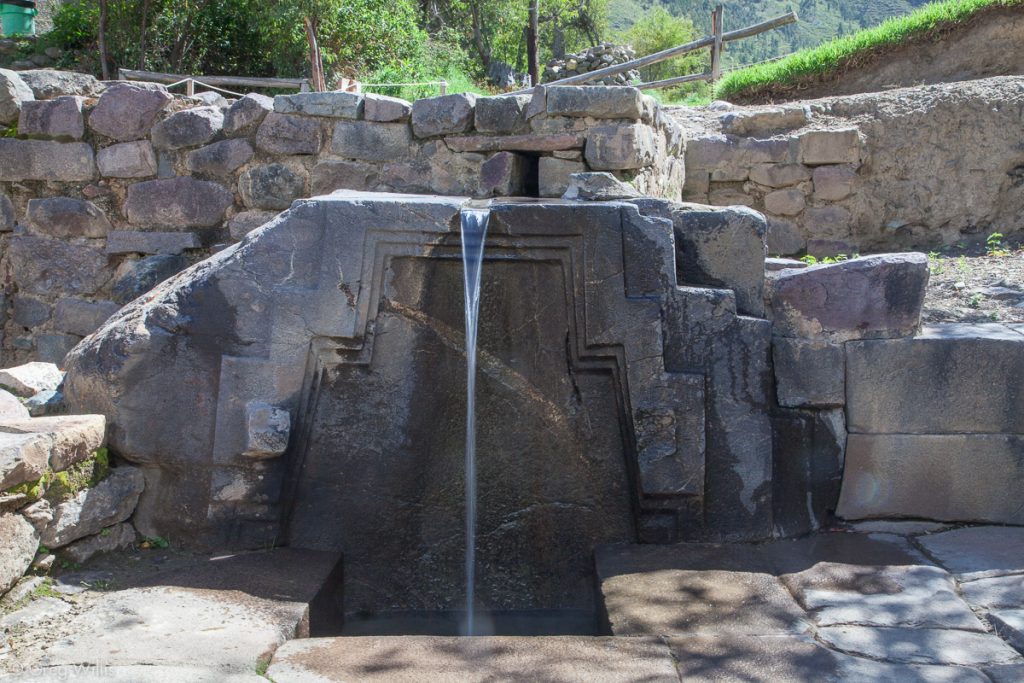
Visiting Ollantaytambo
POSTED ON28 FEB 2018 INCA, RUINS
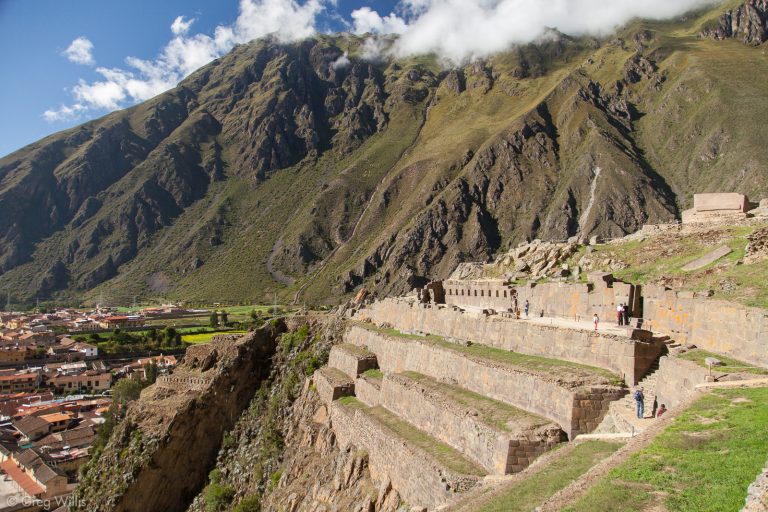
Ollantaytambo Town
Ollantaytambo has a good vibe.
If I had to put my finger on it, I think I like it because it feels like an Inca frontier town. Even now.
Ollanta (the shortened local name) sits at the end of the Sacred Valley: upriver lies plentiful farmland, roads, and many towns; downriver the valley narrows so only a single train track fit between the churning water and the steep hillsides. You’re on the edge of easy civilization, where visitors still pass through to get from their normal world to the wild isolation, and Machu Picchu, that is downriver.
And because it is on this edge and on the way to nowhere, the Spanish conquistadors — for the most part — left it as they found it. The town still has the Inca street grid; the streets still have the Inca water channels running down them; and most houses were built when the Inca king still lived. And it still works as a town. Ollanta feels right-sized and very human.
. . .
Ollantaytambo Ruins
Inca ruins cling to both sides of the steep Patacancha valley, and you’ll find yourself staring at them from the streets of the town thinking “No, that’s too high up for a building.” But yup, they’re up there. Qollqa, Inca storehouses, are on either side; and a temple complex proudly stands flanking the right where it joins the larger Sacred Valley.
The temple complex is the meat of the ruins, and you’ll need your boleto turistico to enter. Get there when it opens, and not just for the good morning light. Like any tourist sight, [universal_truth] if you arrive before the busses you will have a better experience. And count on spending a couple of hours – we stayed for 2 1/2.
Although founded by his grandfather, the great Inca emperor Pachacuti, Manco Inca Yupanqui fortified it against the Spanish and indeed won a battle against them here. But the location of Ollantaytambo was still too close to the Spanish presence in Cusco, so Manco abandoned Ollanta and moved his court and army further downriver into the jungle. And after you climb the terraces, pass the Wall of Ten Niches, and enter into the main temple area you can see when Manco left. Huge partly-carved stones sit today exactly where they were when the Inca masons put down their tools to leave.
More:
https://greg-willis.com/2018/ollantaytambo/
sinkingfeeling
(51,438 posts)Ollantaytambo back in 2007.
Judi Lynn
(160,452 posts)I look forward continually to breakthroughs in science which will enable us to find out far more than we know now. New technology should provide important answers, one would think.
I hope you have a great memory and can recall all of your impressions of the trip to this place. Even the name is amazing!
Ponietz
(2,939 posts)It’s mentioned in the first season of Ancient Aliens. That ‘community’ went off the deep end, in my opinion, but I do agree that current archeology cannot explain how the 50-100 ton monoliths at the Temple of the Sun were were moved from another mountain.
Without doubt, Ollantaytambo’s Wall of the Six Monoliths is one of the most iconic and baffling pieces of Inca architecture yet to be discovered. Standing approximately 36 feet wide and 14 feet high, the wall is one of the great mysteries of the Andes. It consists of 6 massive andesite monoliths, which are curiously divided by small strips, which seem to serve little purpose other than to add a modern riveted steel effect to this ancient wall. The rocks are all masterfully crafted to leave not even a paper-thin crack between them. Archaeologists can only guess that its purpose was to face the winter sun, whilst scientists have only been able to add to the mystery by demonstrating that the stones were dragged 4km from the quarry of Chachiqata on the other side of the 1000ft deep valley and across the Rio Vilcanota. Weighing between 50 and 100 tons a piece, the effort verges on impossible, whilst the reasoning appears to be little more than to dumbfound all that gaze upon them. Littered around the Temple Hill are even larger blocks called the “Tired Stones”, named so after the local belief that they were too tired to reach their final destination within the complex. It is believed that this gargantuan building site was intended to become a Temple of the Sun, but work was abandoned for reasons unknown.
https://uncoveredhistory.com/south-america/exploring-the-mysteries-of-the-andes/
I wonder if extinct megafauna were used as beasts of burden. Humans domesticated the camel and the elephant many thousands of years ago. There were several giant species of both in the Andes and we have very little idea about their disposition or behavior. Imagine an animal as or more biddable than a dromedary camel or an Indian elephant but twice or three times the size. There was surely a brief span of time (a few hundred to several thousand years?) when humans and these giant mammals coexisted. It was climate change, not human predation, that caused the mass extinction and I am confident there were talented people to work out the details if it were possible. Probably only a single species, one that was endangered already before humans made contact, or a few select individuals within that species, were suitable. That would explain why the largest stones are always the oldest.
In the past few years we’ve learned that the process for canine domestication started tens of thousands of years prior to the prevailing estimates—definitely prior to the end of the Ice Age. Evidence for using beasts would be scarce to nonexistent because rope and wood rot quickly. There must be at least one ceremonial grave, though, somewhere. The animals would have played too important a role. Maybe looking for bones or graves along the most probable routes taken would find it.
Judi Lynn
(160,452 posts)and how the precision cutting was accomplished.
Your trip to Ollaytaytambo would have been epic. I've poured over photos of that area with real amazement. What an experience you had. Absolutely enviable!